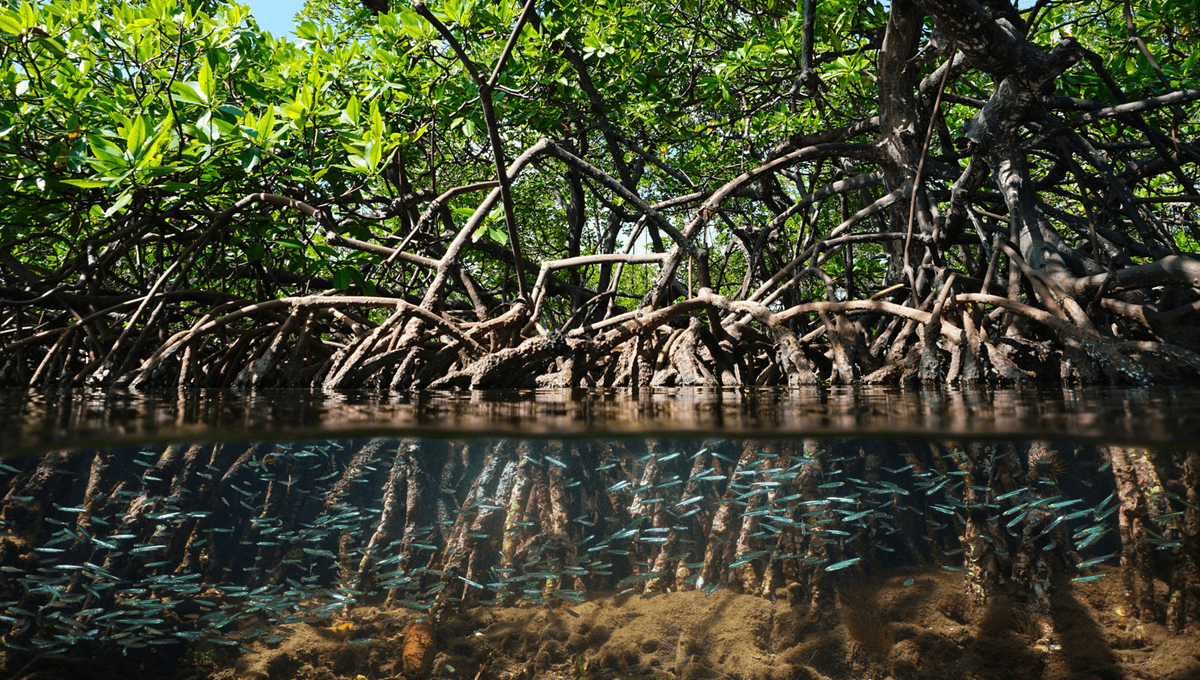
The long-lost remains of an ancient mangrove forest that disappeared over 22 million years ago have been discovered on an island in the Panama Canal.
Scientists from the Smithsonian Tropical Research Institute recently discovered 121 fossilized wood specimens in a stream on Barro Colorado Island in the middle of the human-made Panama Canal. The fossils were found to belong to a never-before-seen species of extinct mangrove called Sonneratioxylon barrocoloradoensis.
Mangrove forests are a fascinating collective of plants that grow along the coast, typically found in warmer climates around the equator. Salty conditions will kill most plants, but these sea-dwelling trees have developed special adaptations to remove salt from the surrounding seawater, allowing them to tolerate the saline conditions.
Radiometric dating indicates that the wood is around 22.79 million years old, meaning this mangrove forest thrived during the Aquitanian stage of the Early Miocene. Around this time, Earth’s continents looked very different and Panama was connected to North America through a long, narrow peninsula riddled with intense volcanic activity.
By closely studying the remains, the researchers worked out that the average height of the trees was approximately 25 meters (82 feet), with some specimens reaching up to 40 meters (131 feet). The team describes these plants as “megaflora” since they are significantly larger than today’s mangroves.
It appears these giant plants were part of a colossal mangrove forest that thrived along the coast of the volcanic chain of central Panama in the Early Miocene. The good times didn’t last forever, though. During the early Miocene, the tectonic planets of South America and the Caribbean crashed together, sparking dramatic volcanic activity that radically changed the landscape of Panama.
The dating and deposits found at the site affirm the theory that this forest was buried by a single lahar, a giant blanket of mud and volcanic material that slipped down the slope of the volcano and consumed the forest. Trapped without any oxygen, plus high silica concentrations, the wood was unable to decompose, allowing it to remain well-preserved for millions upon millions of years.
Today, the fossilized remains around found at the top of a hill that became an artificial island when its surroundings were flooded during the construction of the Panama Canal at the start of the 20th century.
Massive infrastructure developments like this can often destroy relics of the distant past, but the removal of sediment for the new expansion of the Panama Canal unearthed several significant discoveries of a fossilized nature. This included a collection of 20-million-year-old wood that helped to show one of the key events in planet Earth’s history.
The new study is published in the journal Palaeogeography, Palaeoclimatology, Palaeoecology.
Source Link: Remains Of "Lost" 22-Million-Year-Old Megaflora Forest Found In The Panama Canal